Popular categories
Looking for a yarn?

75% Wool, 25% Polyamide
from 3.00 $ /50g
Order DROPS Fabel from Wool Warehouse Direct Ltd
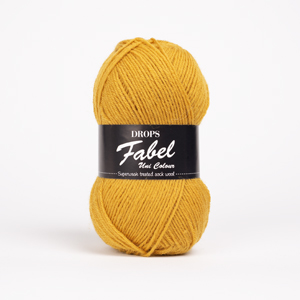
|
DROPS Fabel uni colour 75% Wool, 25% Polyamide |
3.00 $ /50g |
Order |
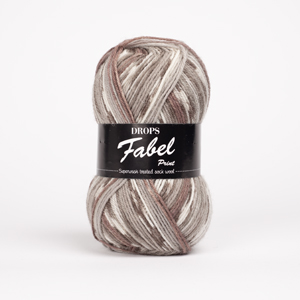
|
DROPS Fabel 75% Wool, 25% Polyamide |
3.25 $ /50g |
Order |
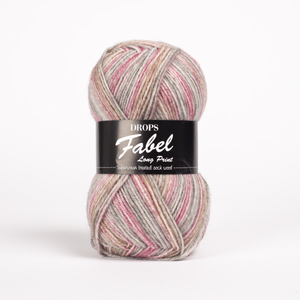
|
DROPS Fabel long print 75% Wool, 25% Polyamide |
3.50 $ /50g |
Order |
Clicking the ORDER button will redirect you to Wool Warehouse Direct Ltd website
Order DROPS Needles & Hooks
Clicking the ORDER button will redirect you to Wool Warehouse Direct Ltd website
The yarn cost is calculated from the pattern’s smallest size and the yarn’s cheapest product type. Looking for an even better price? You might find it on the DROPS Deals!
To the Fair!
Knitted baby jumpsuit with seamless sleeves in 2 threads DROPS Fabel
Change language:
English (US/in)- English (US/in)
- Česky
- Dansk
- Deutsch
- Eesti keel
- English (UK/cm)
- Español
- Français
- Íslenska
- Italiano
- Magyar
- Nederlands
- Norsk
- Polski
- Português
- Suomi
- Svenska
- English (UK/cm), Bulgaria
- English (UK/cm), Croatia
- English (UK/cm), Greece
- English (UK/cm), Latvia
- English (UK/cm), Lithuania
- English (UK/cm), Romania
- English (UK/cm), Slovenia
- Česky, Slovakia
Finished measurements:
Bust: 52-56-64 (68-76) cm [20½"-22"-25 ¼" (26 ¾"-30")]
Full length: 56-65-74 (79-86) cm [22"-25½"-29⅛" (31"-33⅞")]
Materials: DROPS FABEL from Garnstudio
250-300-300 (350-400) g color no 161, pink dream
DROPS DOUBLE POINTED NEEDLES and CIRCULAR NEEDLE (60 cm [24"]) size 5 mm [8] – or size needed to get 17 sts x 22 rows in stockinette st with 2 threads = 10 x 10 cm [4" x 4"].
DROPS POINTED AND DOUBLE POINTED Needles size 4 mm [US 6] – for rib.
DROPS WOODEN BUTTON no 511: 5-5-6 (6-6) pcs.
-------------------------------------------------------
Alternative Yarn – See how to change yarns here
Yarn Groups A to F – Use the same pattern and change the yarn here
Yarn usage using an alternative yarn – Use our yarn converter here
-------------------------------------------------------
You might also like...

75% Wool, 25% Polyamide
from 3.00 $ /50g
Order DROPS Fabel from Wool Warehouse Direct Ltd

|
DROPS Fabel uni colour 75% Wool, 25% Polyamide 3.00 $ /50g Order |

|
DROPS Fabel print 75% Wool, 25% Polyamide 3.25 $ /50g Order |

|
DROPS Fabel long print 75% Wool, 25% Polyamide 3.50 $ /50g Order |
Clicking the ORDER button will redirect you to Wool Warehouse Direct Ltd website
Order DROPS Needles & Hooks
Clicking the ORDER button will redirect you to Wool Warehouse Direct Ltd website
The yarn cost is calculated from the pattern’s smallest size and the yarn’s cheapest product type. Looking for an even better price? You might find it on the DROPS Deals!
Pattern instructions
BUTTONHOLES: Bind off for buttonholes on right front band. 1 buttonhole = K tog 3rd and 4th st from mid front and make 1 YO. Bind off for buttonholes when piece measures:
SIZE 1/3 months: 24, 31, 38 and 45 cm [9½", 12¼",15", 17¾"]
SIZE 6/9 months: 28, 37, 45 and 53 cm [11", 14½", 17¾", 21"]
SIZE 12/18 months: 32, 40, 48, 55 and 62 cm [12½", 15¾", 19", 21⅝", 24⅜"]
SIZE 2 years: 34, 42, 50, 58 and 67 cm [13⅜", 16½", 19¾", 22¾", 26⅜"]
SIZE 3/4 years: 39, 47, 56, 65 and 74 cm [15¼", 18½", 22", 25½", 29⅛"]
Note: The last buttonhole is made on neckline.
----------------------------------------------------------
----------------------------------------------------------
LEG:
Worked in the round on double pointed needles.
LOOSELY cast on 44-48-52 (56-60) sts on double pointed needles size 4 mm [US 6] with 2 threads Fabel. K 1 round and continue in rib, K2/P2. When piece measures 12 cm [4¾"] change to double pointed needles size 5 mm [US 8] and continue in stockinette st, AT THE SAME TIME dec 10-12-12 (12-12) sts evenly on first round = 34-36-40 (44-48) sts. Insert a marker at beg of round = inside of leg.
REMEMBER THE KNITTING GAUGE!
AT THE SAME TIME when piece measures 14 cm [5½"] inc 1 st on both sides of marker and repeat the inc on every 2-2-3 (4-5) round a total of 7-8-9 (9-10) times = 48-52-58 (62-68) sts. When piece measures 21-24-28 (31-36) cm [8¼"-9½"-11" (12¼"-14¼")] bind off 4 sts on the inside of leg (= 2 sts on each side of marker) = 44-48-54 (58-64) sts. Put piece aside and knit the other leg in the same way.
JUMPSUIT:
Slip both legs in on the same circular needle size 5 mm [US 8] with the bind off sts towards one another = 88-96-108 (116-128) sts. Continue back and forth on needle from mid front as follows (first row = RS): Cast on 3 new sts, K all sts on row and cast on 3 new sts at the end of row = 94-102-114 (122-134) sts. Insert a marker 25-27-30 (32-35) sts in from each side (= 44-48-54 (58-64) sts between markers on back piece). Continue in stockinette st with 5 garter sts each side towards mid front (= front bands). AT THE SAME TIME when piece measures 24-28-32 (34-39) cm [9½"-11"-12½" (13⅜"-15¼")] bind off for buttonhole on right front band – SEE ABOVE! When piece measures 45-53-61 (65-71) cm [17 ¾"-21"-24" (25½"-28")] divide the piece in 2 by markers and complete front and back pieces separately.
BACK PIECE:
= 44-48-54 (58-64) sts. Continue in stockinette st, AT THE SAME TIME cast on new sts for sleeves each side at the end of every row: 3 sts 2-1-3 (1-2) times, 5 sts 1-2-1 (2-2) times, 7 sts 1-1-1 (2-2) times and then 9-10-11 (14-16) sts 1 time = 98-108-118 (140-156) sts. When piece measures 55-64-73 (78-85) cm [21⅝"-25¼"-28¾" (30¾"-33½")] bind off the middle 16-18-18 (20-20) sts for neck and complete each side separately. Work 2 rows on the remaining 41-45-50 (60-68) sts and bind off loosely.
LEFT FRONT PIECE:
= 25-27-30 (32-35) sts. Continue in stockinette st with 5 garter sts on front band, AT THE SAME TIME cast on new sts at the end of every row towards the side as described for back piece = 52-57-62 (73-81) sts. When piece measures 52-61-69 (74-81) cm [20½"-24"-27⅛" (29⅛"-32")] bind off 5-6-6 (7-7) sts towards mid front for neck and bind off to shape the neckline on every other row: 2 sts 2 times and 1 st 2 times = 41-45-50 (60-68) sts left on shoulder/sleeve. Bind off loosely when piece measures 56-65-74 (79-86) cm [22"-25½"-29⅛" (31"-33⅞")].
RIGHT FRONT PIECE:
Like left front piece, but mirrored. Remember buttonholes!
ASSEMBLY:
Sew upper arm seams with duplicate sts from RS. Place right front band over left front band at bottom of body piece and fasten. Sew under arm seams with duplicate sts from RS. Sew tog opening between legs.
NECKLINE:
Pick up approx 52 to 65 sts round neckline on needle size 4 mm [US 6] with 2 threads Fabel. K 4 rows, AT THE SAME TIME on second row bind off for 1 buttonhole in line with the others on front band. Bind off from WS, but K sts. Sew on buttons.
CUFF:
Pick up 32-36-36 (40-40) sts on double pointed needles size 4 mm [US 6] with 2 threads Fabel round sleeve edge. P 1 round and continue in rib, K2/P2. Bind off when rib measures 5 cm [2"]. Repeat round the other sleeve edge.
Diagram
All measurements in charts are in cm.

What can you do with our patterns? You can share DROPS patterns online, using the pattern original picture, materials, name and number. But you are NOT ALLOWED to reproduce the complete pattern digitally in any way. Yarn stores are welcome to use the DROPS pattern database to promote the sale of our assortment. You can print out our patterns, make as many copies as you’d like. The only thing we ask is that you don't make any changes / additions to the original printed document. And that the patterns according to the DROPS philosophy are given out to the consumers for free. Editorials that wish to publish our patterns in printed books or magazines can contact us for more information. The sale of garments based on DROPS patterns is permitted as long as they are sold as single items or per order. Further commercial use of the patterns is not permitted. It has to be clearly stated that the garment is made based on a design from DROPS DESIGN. The use of clothing labels of which DROPS DESIGN forms part is conditioned by the inclusion of the following text: “A DROPS DESIGN made by …..”. The use of DROPS photos for marketing purposes/sales is only permitted in connection with the use/sale of DROPS products. The photos may not be cut or edited and the logo should be clearly visible.
We reserve the right to withdraw the permission for use of our patterns at any time, notwithstanding the reason.
Each of our patterns has specific tutorial videos to help you.
These step-by-step tutorials might also help you:
Why is the knitting/crochet tension so important?
Knitting tension is what determines the final measurements of your work, and is usually measured per 10 x 10 cm. It is provided like so: number of stitches in width x number of rows in height - eg: 19 stitches x 26 rows = 10 x 10 cm.
The knitting tension is very individual; some people knit/crochet loosely while others work tightly. You adjust the knitting tension with the needle size, which is why the suggested needle size only serve as a guide! You need to adjust this (up or down) to ensure that YOUR knitting tension matches the knitting tension provided in the pattern. If you work with a different knitting tension than provided you will have a different yarn consumption, and your work will have different measurements than what the pattern suggests.
The knitting tension also determines which yarns can replace each other. As long as you achieve the same knitting tension you can replace one yarn with another.
See DROPS lesson: How to measure your tension/gauge
See DROPS video: How to make a gauge tension swatch
How do I know how many balls of yarn I need?
The required amount of yarn is provided in grams, eg: 450 g. To calculate how many balls you’ll need you first need to know how many grams are in 1 ball (25g, 50g or 100g). This information is available if you click on the individual yarn quality on our pages. Divide the amount required with the amount of each ball. For example, if each ball is 50g (the most common amount), the calculation will be as follows: 450 / 50 = 9 balls.
Can I use a different yarn than what the pattern suggests?
The important thing when changing from one yarn to another is that the knitting/crochet tension remains the same. This is so that the measurements of the finished piece will be the same as on the sketch provided. It is easier to achieve the same knitting tension using yarns from the same yarn group. It is also possible to work with multiple strands of a thinner yarn to achieve the knitting tension of a thicker one. Please try our yarn converter. We recommend you to always work a test swatch.
Please NOTE: when changing yarn the garment might have a different look and feel to the garment in the photo, due to individual properties and qualities of each yarn.
See DROPS lesson: Can I use a different yarn than the one mentioned in the pattern?
What are the yarn groups?
All our yarns are categorised into yarn groups (from A to F) according to thickness and knitting tension – group A contains the thinnest yarns and group F the thickest. This makes it easier for you to find alternative yarns to our patterns, should you wish to switch yarn. All yarns within the same group have a similar knitting tension and can easily replace each other. However, different yarn qualities have different structures and properties which will give the finished work a unique look and feel.
How do I use the yarn converter?
At the top of all our patterns you’ll find a link to our yarn converter, which is a helpful tool should you wish to use a different yarn than suggested. By filling in the yarn quality you wish to replace, the amount (in your size) and number of strands, the converter will present good alternative yarns with the same knitting tension. Additionally it will tell you how much you’ll require in the new qualities and whether you’ll need to work with multiple strands. Most skeins are 50g (some are 25g or 100g).
If the pattern is worked with multiple colours, every colour will have to be converted separately. Similarly, if the pattern is worked with several strands of different yarns (for example 1 strand Alpaca and 1 strand Kid-Silk) you will have to find alternatives for each, individually.
Why do you show discontinued yarns in the patterns?
Since different yarns have different qualities and textures we have chosen to keep the original yarn in our patterns. However, you can easily find options among our available qualities by using our yarn converter, or simply pick a yarn from the same yarn group.
It is possible that some retailers still have discontinued yarns in stock, or that someone has a few skeins at home that they would like to find patterns for.
The yarn converter will provide both alternative yarn as well as required amount in the new quality.
What size should I knit?
If you think it's hard to decide what size to make, it can be a good idea to measure a garment you own already and like the size of. Then you can pick the size by comparing those measures with the ones available in the pattern's size chart.
You'll find the size chart at the bottom of the pattern.
See DROPS lesson: How to read size chart
Why do I get the wrong knitting tension with the suggested needle size?
The needle size provided in the pattern serves only as a guide, the important thing is to follow the knitting tension. And since knitting tension is very individual, you will have to adjust the needle size to ensure that YOUR tension is the same as in the pattern – maybe you’ll have to adjust 1, or even 2 needle sizes, up or down to achieve the correct tension. For this, we recommend that you work test swatches.
Should you work with a different knitting tension than the one provided, the measurements of the finished garment might deviate from the measurement sketch.
See DROPS lesson: How to measure your tension/gauge
See DROPS video: How to make a gauge tension swatch
Why is the pattern worked top-down?
Working a garment top-down provides more flexibility and room for personal adjustment. For example it is easier to try the garment on while working, as well as making adjustments to length of yoke and shoulder caps.
The instructions are carefully explaining every step, in the correct order. Diagrams are adjusted to the knitting direction and are worked as usual.
How do I work according to a knitting diagram?
The diagram depicts all rows/rounds, and every stitch seen from the right side. It is read from bottom to top, from right to left. 1 square = 1 stitch.
When working back and forth, every other row is worked from the right side and every other row is worked from the wrong side. When working from the wrong side, the diagram will have to be worked reversed: from left to right, knit stitches are purled, purl stitches are knit etc.
When working in the round every round is worked from the right side and the diagram are worked from right to left on all rounds.
See DROPS lesson: How to read knitting diagrams
How do I work according to a crochet diagram?
The diagram depicts all rows/rounds, and every stitch seen from the right side. It is worked from bottom to top, from right to left.
When working back and forth every other row is worked from the right side: from right to left and every other row is worked from the wrong side: from left to right.
When working in the round, every row in the diagram are worked from the right side, from right to left.
When working a circular diagram you start in the middle and work your way outwards, counter clockwise, row by row.
The rows usually start with a given number of chain stitches (equivalent to the height of the following stitch), this will either be depicted in the diagram or explained in the pattern.
See DROPS lesson: How to read crochet diagrams
How do I work several diagrams simultaneously on the same row/round?
Instructions for working several diagrams after each other on the same row/round, will often be written like so: “work A.1, A.2, A.3 a total of 0-0-2-3-4 times". This means you work A.1 once, then A.2 is worked once, and A.3 is repeated (in width) the number of times provided for your size – in this case like so: S = 0 times, M = 0 times, L=2 times, XL= 3 times and XXL = 4 times.
The diagrams are worked as usual: begin with the first row in A.1, then work the first row in A.2 etc.
See DROPS lesson: How to read knitting diagrams
See DROPS lesson: How to read crochet diagrams
Why are the sleeves shorter in larger sizes?
The total width of the garment (from wrist-to-wrist) will be larger in the larger sizes, despite the actual sleeves being shorter. The larger sizes have longer sleeve caps and wider shoulders, so there will be a good fit in all sizes.
Where on the garment is the length measured?
The measurement sketch/schematic drawing provides information regarding the full length of the garment. If it’s a jumper or a jacket the length is measured from the highest point on the shoulder (usually closest to the neckline), and straight down to the bottom of the garment. It is NOT measured from the tip of shoulder. Similarly, the length of yoke is measured from the highest point on the shoulder and down to where yoke is split into body and sleeves.
See DROPS lesson: How to read a schematic drawing
What is a repeat?
Diagrams are often repeated on the round or in height. 1 repeat is the diagram the way it appears in the pattern. If it says to work 5 repeats of A.1 in the round, then you work A.1 a total of 5 times after/next to each other in the round. If it says to work 2 repeats of A.1 vertically/in height you work the entire diagram once, then begin again at the start and work the entire diagram one more time.
Why does the piece start with more chain stitches than it’s worked with?
Chain stitches are slightly narrower than other stitches and to avoid working the cast-on edge too tight, we simply chain more stitches to begin with. The stitch count will be adjusted on the following row to fit the pattern and measurement sketch.
Why increase before the rib edge when the piece is worked top-down?
The rib edge is more elastic and will contract slightly compared to, for example, stocking stitch. By increasing before the rib edge, you avoid a visible difference in width between the rib edge and the rest of the body.
Why increase in the cast-off edge?
It’s very easy to cast off too tightly, and by making yarn overs while casting off (and simultaneously casting these off) you avoid a too tight cast off edge.
See DROPS video: How to bind off with yarn overs (yo)
How do I increase/decrease on every 3rd and 4th row/round alternately?
To achieve an even increase (or decrease) you can increase on, for example: every 3rd and 4th row alternately, like so: work 2 rows and increase on the 3rd row, work 3 rows and increase on the 4th. Repeat this until the increase is complete.
See DROPS lesson: Increase or decrease 1 st on every 3rd and 4th row alternately
How can I work a jacket in the round instead of back and forth?
Should you prefer to work in the round instead of back and forth, you may of course adjust the pattern. You’ll need to add steeks mid-front (usually 5 stitches), and follow the instructions. When you would normally turn and work from the wrong side, simply work across the steek and continue in the round. At the end you’ll cut the piece open, pick up stitches to work bands, and cover the cut edges.
See DROPS video: How to knit steeks and cut open
Can I work a jumper back and forth instead of in the round?
Should you prefer to work back and forth instead of in the round, you may of course adjust the pattern so you work the pieces separately and then assemble them at the end. Divide the stitches for the body in 2, add 1 edge stitch in each side (for sewing) and work the front and back pieces separately.
See DROPS lesson: Can I adapt a pattern for circular needles into straight needles?
Why is the pattern slightly different than what I see in the photo?
Pattern repeats can vary slightly in the different sizes, in order to get the correct proportions. If you’re not working the exact same size as the garment in the photo, yours might deviate slightly. This has been carefully developed and adjusted so that the complete impression of the garment is the same in all sizes.
Make sure to follow instructions and diagrams for your size!
How do I make a women’s size garment into a men’s size one?
If you have found a pattern you like which is available in women’s size it’s not very difficult to convert it to men’s size. The biggest difference will be the length of sleeves and body. Start working on the women size that you think would fit across the chest. The additional length will be worked right before you cast off for the armhole/sleeve cap. If the pattern is worked top-down you can add the length right after the armhole or before the first decrease on sleeve.
Regarding additional yarn amount, this will depend on how much length you add, but it is better with a skein too many than too few.
How do I prevent a hairy garment from shedding?
All yarns will have excess fibres (from production) that might come off as lint or shedding. Brushed yarns (ie hairier yarns) have more of these loose, excess fibres, causing more shedding.
Shedding also depends on what is worn under or over the garment, and whether this pulls at the yarn fibres. It’s therefore not possible to guarantee that there will be no shedding
Below are some tips on how to get the best result when working with hairier yarns:
1. When the garment is finished (before you wash it) shake it vigorously so the looser hairs come off. NOTE: do NOT use a lint roller, brush or any method that pulls at the yarn.
2. Place the garment in a plastic bag and put it in your freezer - the temperature will cause the fibres to become less attached to each other, and excess fibres will come off easier.
3. Leave in the freezer for a few hours before taking it out and shaking it again.
4. Wash the garment according to the instructions on the yarn label.
Why does my garment pill?
Pilling is a natural process that happens to even the most exclusive of fibers. It's a natural sign of wear and tear that is hard to avoid, and that is most visible in high friction areas of your garment like a sweater's arms and cuffs.
You can make your garment look as new by removing the pilling, using a fabric comb or a pill/lint remover.
In the meantime, you can read the questions and answers that others have left to this pattern or join the DROPS Workshop on Facebook to get help from fellow knitters/crocheters!
To the Fair! |
|
|
|
|
Knitted baby jumpsuit with seamless sleeves in 2 threads DROPS Fabel
DROPS Baby 16-4 |
|
|
GARTER ST (back and forth on needle): K all rows. BUTTONHOLES: Bind off for buttonholes on right front band. 1 buttonhole = K tog 3rd and 4th st from mid front and make 1 YO. Bind off for buttonholes when piece measures: SIZE 1/3 months: 24, 31, 38 and 45 cm [9½", 12¼",15", 17¾"] SIZE 6/9 months: 28, 37, 45 and 53 cm [11", 14½", 17¾", 21"] SIZE 12/18 months: 32, 40, 48, 55 and 62 cm [12½", 15¾", 19", 21⅝", 24⅜"] SIZE 2 years: 34, 42, 50, 58 and 67 cm [13⅜", 16½", 19¾", 22¾", 26⅜"] SIZE 3/4 years: 39, 47, 56, 65 and 74 cm [15¼", 18½", 22", 25½", 29⅛"] Note: The last buttonhole is made on neckline. ---------------------------------------------------------- ---------------------------------------------------------- LEG: Worked in the round on double pointed needles. LOOSELY cast on 44-48-52 (56-60) sts on double pointed needles size 4 mm [US 6] with 2 threads Fabel. K 1 round and continue in rib, K2/P2. When piece measures 12 cm [4¾"] change to double pointed needles size 5 mm [US 8] and continue in stockinette st, AT THE SAME TIME dec 10-12-12 (12-12) sts evenly on first round = 34-36-40 (44-48) sts. Insert a marker at beg of round = inside of leg. REMEMBER THE KNITTING GAUGE! AT THE SAME TIME when piece measures 14 cm [5½"] inc 1 st on both sides of marker and repeat the inc on every 2-2-3 (4-5) round a total of 7-8-9 (9-10) times = 48-52-58 (62-68) sts. When piece measures 21-24-28 (31-36) cm [8¼"-9½"-11" (12¼"-14¼")] bind off 4 sts on the inside of leg (= 2 sts on each side of marker) = 44-48-54 (58-64) sts. Put piece aside and knit the other leg in the same way. JUMPSUIT: Slip both legs in on the same circular needle size 5 mm [US 8] with the bind off sts towards one another = 88-96-108 (116-128) sts. Continue back and forth on needle from mid front as follows (first row = RS): Cast on 3 new sts, K all sts on row and cast on 3 new sts at the end of row = 94-102-114 (122-134) sts. Insert a marker 25-27-30 (32-35) sts in from each side (= 44-48-54 (58-64) sts between markers on back piece). Continue in stockinette st with 5 garter sts each side towards mid front (= front bands). AT THE SAME TIME when piece measures 24-28-32 (34-39) cm [9½"-11"-12½" (13⅜"-15¼")] bind off for buttonhole on right front band – SEE ABOVE! When piece measures 45-53-61 (65-71) cm [17 ¾"-21"-24" (25½"-28")] divide the piece in 2 by markers and complete front and back pieces separately. BACK PIECE: = 44-48-54 (58-64) sts. Continue in stockinette st, AT THE SAME TIME cast on new sts for sleeves each side at the end of every row: 3 sts 2-1-3 (1-2) times, 5 sts 1-2-1 (2-2) times, 7 sts 1-1-1 (2-2) times and then 9-10-11 (14-16) sts 1 time = 98-108-118 (140-156) sts. When piece measures 55-64-73 (78-85) cm [21⅝"-25¼"-28¾" (30¾"-33½")] bind off the middle 16-18-18 (20-20) sts for neck and complete each side separately. Work 2 rows on the remaining 41-45-50 (60-68) sts and bind off loosely. LEFT FRONT PIECE: = 25-27-30 (32-35) sts. Continue in stockinette st with 5 garter sts on front band, AT THE SAME TIME cast on new sts at the end of every row towards the side as described for back piece = 52-57-62 (73-81) sts. When piece measures 52-61-69 (74-81) cm [20½"-24"-27⅛" (29⅛"-32")] bind off 5-6-6 (7-7) sts towards mid front for neck and bind off to shape the neckline on every other row: 2 sts 2 times and 1 st 2 times = 41-45-50 (60-68) sts left on shoulder/sleeve. Bind off loosely when piece measures 56-65-74 (79-86) cm [22"-25½"-29⅛" (31"-33⅞")]. RIGHT FRONT PIECE: Like left front piece, but mirrored. Remember buttonholes! ASSEMBLY: Sew upper arm seams with duplicate sts from RS. Place right front band over left front band at bottom of body piece and fasten. Sew under arm seams with duplicate sts from RS. Sew tog opening between legs. NECKLINE: Pick up approx 52 to 65 sts round neckline on needle size 4 mm [US 6] with 2 threads Fabel. K 4 rows, AT THE SAME TIME on second row bind off for 1 buttonhole in line with the others on front band. Bind off from WS, but K sts. Sew on buttons. CUFF: Pick up 32-36-36 (40-40) sts on double pointed needles size 4 mm [US 6] with 2 threads Fabel round sleeve edge. P 1 round and continue in rib, K2/P2. Bind off when rib measures 5 cm [2"]. Repeat round the other sleeve edge. |
|

|
|
|
Have you made this or any other of our designs? Tag your pictures in social media with #dropsdesign so we can see them! Do you need help with this pattern?You'll find tutorial videos, a Comments/Questions area and more by visiting the pattern on garnstudio.com. © 1982-2024 DROPS Design A/S. We reserve all rights. This document, including all its sub-sections, has copyrights. Read more about what you can do with our patterns at the bottom of each pattern on our site. |
With over 40 years in knitting and crochet design, DROPS Design offers one of the most extensive collections of free patterns on the internet - translated to 17 languages. As of today we count 309 catalogs and 11624 patterns - 11615 of which are translated into English (US/in).
We work hard to bring you the best knitting and crochet have to offer, inspiration and advice as well as great quality yarns at incredible prices! Would you like to use our patterns for other than personal use? You can read what you are allowed to do in the Copyright text at the bottom of all our patterns. Happy crafting!














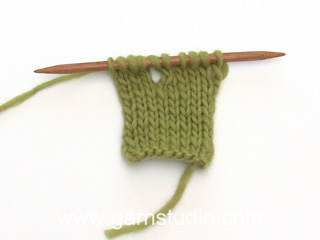
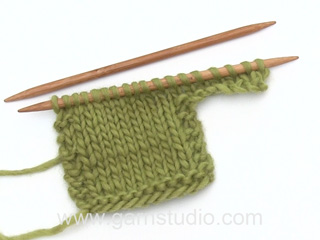

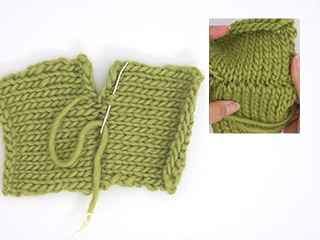
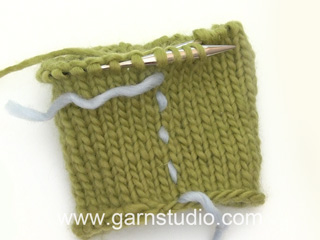


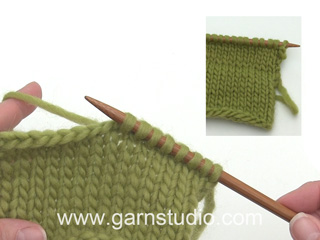


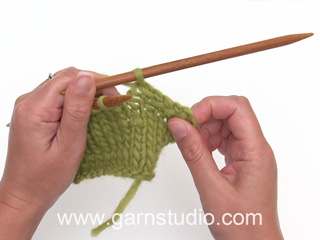
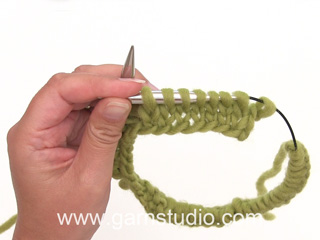
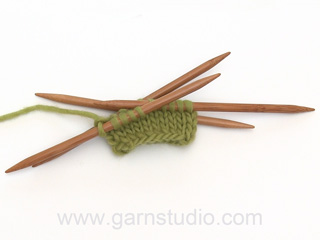
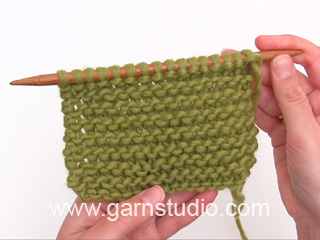
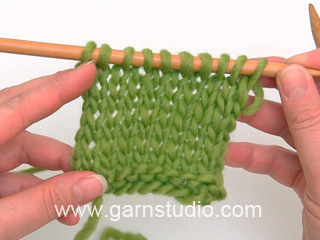


















Comments / Questions (19)
Hola, estoy mirando dos patrones que utilizan la misma lana pero las agujas que se recomiendan utilizar tienen tamaños muy diferentes. Se trata del patron To the Fair! que recomienda agujas circulares de 5 y 4 mm y el patron Summer Fruit que recomienda aguja de 2.5 mm. Esto es correcto? Me esta generando duda ya que la diferencia de tamaño es bastante importante. Muchas gracias Iciar
25.09.2017 - 20:39DROPS Design answered:
Hola Iciar. El patron To the Fair! está trabajado con 2 hilos de Fabel y aguja de 5 mm y el patrón Summer Fruit con 1 hilo y aguja de 2,5 mm.
26.09.2017 - 17:56In het patroon staat dat je dubbele draad gebruikt. Bij de jumpsuit op de foto is zo te zien, een enkele draad gebruikt; met dubbele draad krijg je nl een heel ander kleurpatroon. Wat is juist?
06.02.2016 - 13:47DROPS Design answered:
Hoi Luna. Deze jumpsuit is oorspronkelijk gebreid in DROPS Big Fabel, maar deze is niet meer in ons assortiment. Big Fabel was gelijk aan een dubbele draad Fabel. Dus je breit deze nu met een dubbele draad Fabel. De kleur is precies hetzelfde.
09.02.2016 - 16:37Hvordan syr man blusen sammen foroven , ærmer og skuldrene
21.10.2015 - 13:49DROPS Design answered:
Hej Eva. Du syr sammen med maskesting (Sy overærme-sømmene med masketing fra retsiden), Se ogsaa video her:
21.10.2015 - 16:40Hei, forstår ikke hvordan man skal strikke ermene. Det står bare "strikk så ermene"... Hvor lange i de forskjellige str? Håper på svar da jeg har veldig lyst til å strikke denne😊
29.05.2015 - 20:38DROPS Design answered:
Hei Katarina. Ermene strikkes i forlaengelse af bakstk og forstk: SAMTIDIG legges det opp nye m på slutten av hver p i hver side til ermer: 3 m 2-1-3 (1-2) ganger, 5 m 1-2-1 (2-2) ganger, 7 m 1-1-1 (2-2) ganger og deretter 9-10-11 (14-16) m 1 gang
01.06.2015 - 14:07Beste, Graag had ik dit model gebreid met Drops Big Delight. Ik zag dat de stekenproef overeenkomt dus qua afmetingen moet dit haalbaar zijn. Ik weet alleen niet hoeveel wol ik dan moet bestellen of hoe ik dit kan berekenen... Kan u mij soms verder helpen...? mvg Siska
04.04.2015 - 12:14DROPS Design answered:
Kijk op onze site bij 'Tips en hulp' en kies dan voor Veel gestelde vragen. Dan vind u onder punt 5 een uitleg voor het kiezen van een ander garen.
04.04.2015 - 19:43Vill gärna sticka den här fast i Drops Safran. Undrar hur mycket garn jag behöver för storlek 12/18 månader och vilken stickstorlek? Det anges olika stickstorlek till garnen? Med vänlig hälsning Tina
20.03.2014 - 19:57DROPS Design answered:
Hej Tina Du bör köpa 8 nystan Safran. Plagget är stickat i dubbel tråd, men om du vill sticka i enkel tråd kan du använda Paris. Då behöver du också 8 nystan. Oavsett 2 trådar Safran eller 1 tråd Paris så ska du ha 17 m i bredd på 10 cm för att få rätt mått. Prova med 5 mm stickor och se om du får till det.
27.03.2014 - 22:28Denne oppskriften mangler ermer.
07.11.2013 - 15:53DROPS Design answered:
Hei Marie. Der er ermer i opskriften, se under BAKSTK:... SAMTIDIG legges det opp nye m på slutten av hver p i hver side til ermer:
07.11.2013 - 17:19Minun versioni. (My version.)
28.05.2011 - 20:53Super schön und super praktisch, nie zu kalt und nie zu warm. Ich stricke nun schon die 3. Größe! Vielen Dank dafür!
22.02.2011 - 21:31Ich bin nicht sicher wie Sie auf 36 Maschen kommen. Auf beiden Seiten des Rückenteils werden je 41 Maschen aufgenommen und die angegebene Maschenzahl von 120 stimmt (3 M. .....1 Mal, 5 M....2 Mal, 7 M...2 Mal und danach 14 M. 1 Mal)
13.12.2010 - 10:02